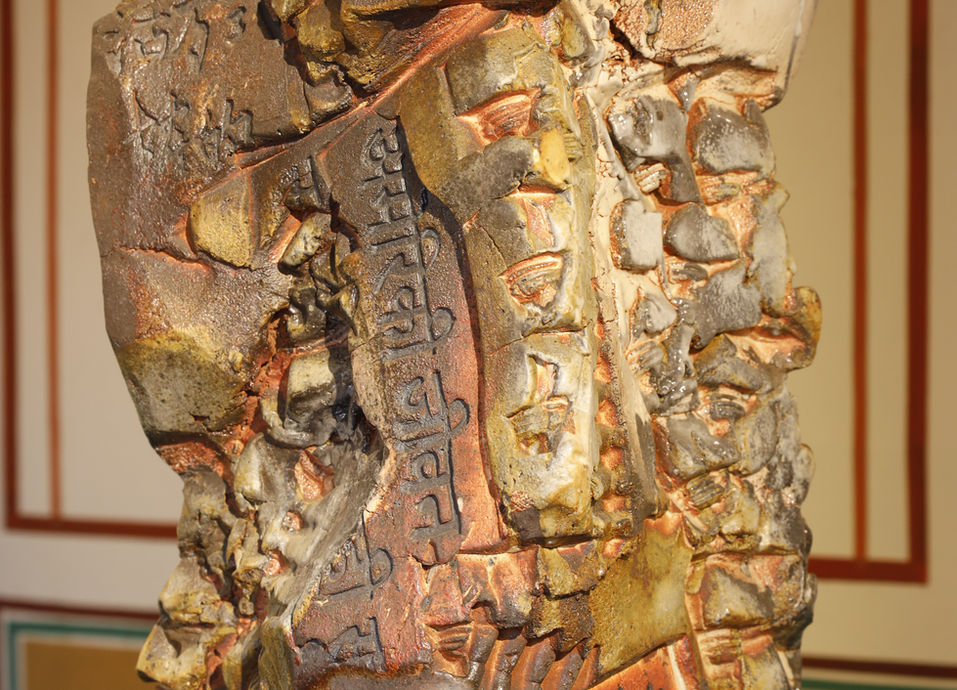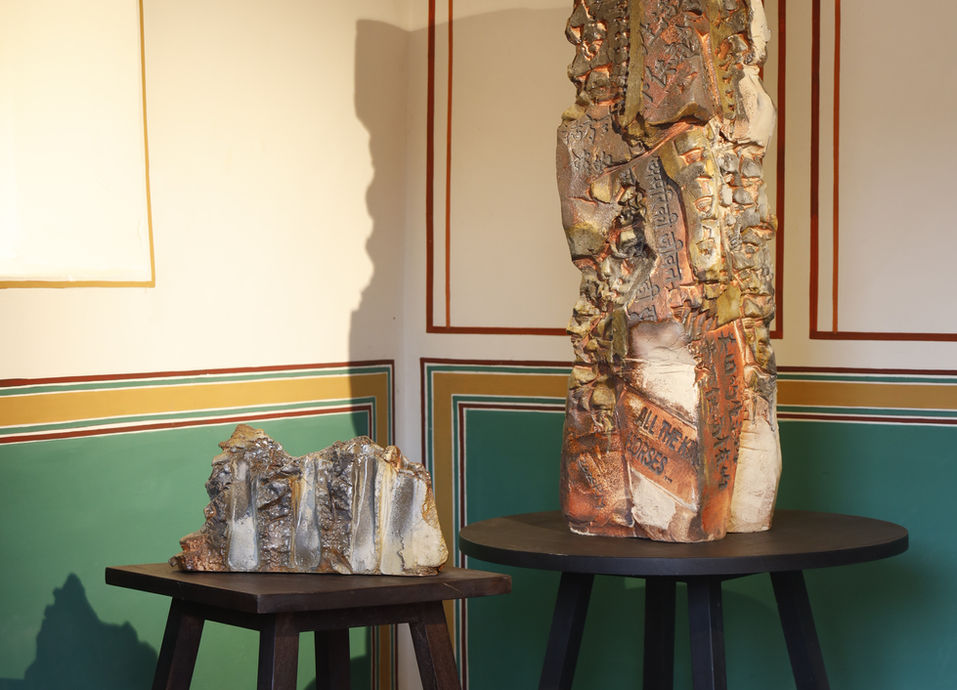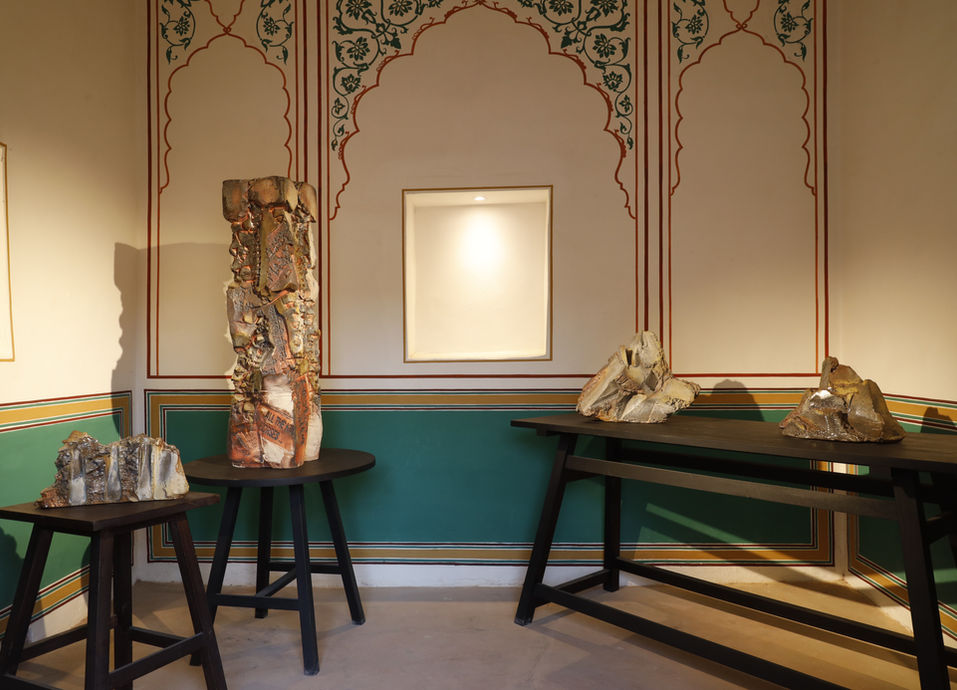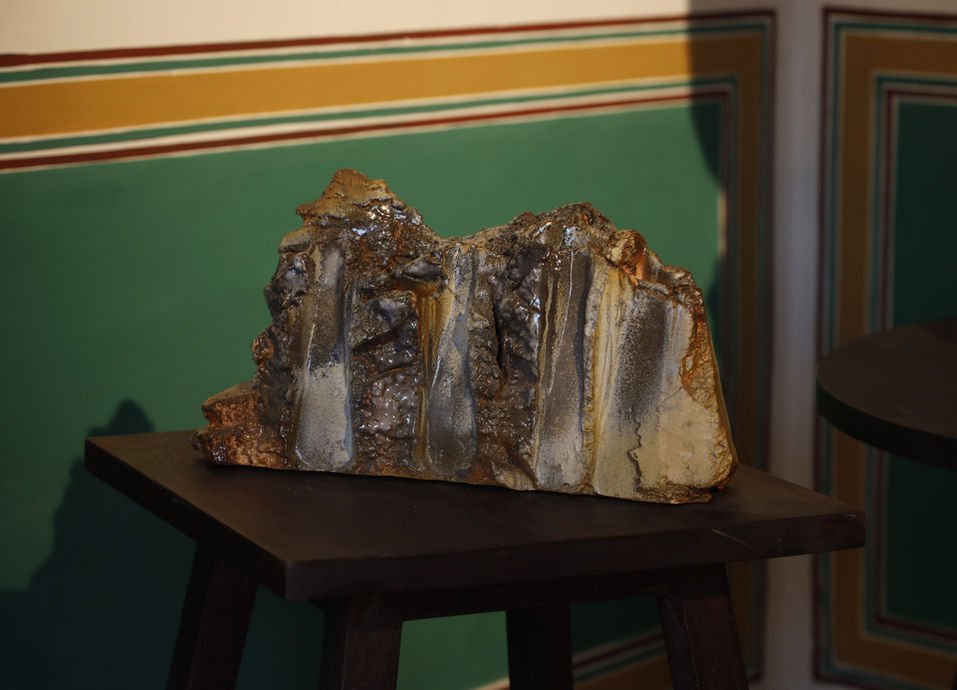
RAY MEEKER

Born in 1944 in New York, Ray Meeker now lives and works in Puducherry. He received his BFA in Architecture and Ceramics from Pepperdine College, University of Southern California. Meeker moved to Puducherry in 1970, where he founded Golden Bridge Pottery (GBP) with Deborah Smith in ’71, making them the first producers of hand-thrown glazed stoneware in South India at the time. Pottery has remained significant in Meeker’s prolific practice which ranges from modest utilitarian ceramics to monumental sculptural installations and kiln built architecture, a result of a fourteen-year experiment in developing fire stabilized mud buildings, which began in 1985.
Meeker has exhibited his works at Nature Morte, New Delhi (2021, 2014, 2008, 2004, 2001); Cymroza Art Gallery, Mumbai (2000) and Eicher Gallery, New Delhi (1996). He has also shown his work at Chawan Expo International, Brussels, Vichte, Nashville (2015) and Singapore (2014); NCECA, Houston (2013, 2005, 1996); Architecture Biennale, Venice (2012) and India Habitat Center, New Delhi (2010) to name a few. Ray has continued to pursue architecture and research projects such as fire-stabilized shrine for Nrityagram dance community, Bangalore (1999-97); ‘Agni Jata’, Auroville (1988) on which he produced a video and received an award at the Ceramics Millennium, Amsterdam (1999). He is also a member of the International Academy of Ceramics and has won a joint Outstanding Achievement award from NCECA, Houston (2018) for his nearly five-decade influence as a teacher and artist.
About The Work
Courtesy of Nature Morte, New Delhi
Meeker’s most recent works range from the small (hand-held, object-like) to the statuesque (stoic columns standing up to seven feet high). His process is unconventional: turning away from the standard methods of constructing forms on a potter’s wheel or by using coils and slabs. Meeker wrestles blocks of clay into brutalist chunks, tearing at it as if it is flesh, pummelling forms into being with crowbars and hammers. The surfaces of his objects retain the marks of these violent tools, the deep browns and blacks of his glazes enhance the somewhat industrial, almost alien, character of his forms. The artist eschews representation in favour of a type of abstraction that is unafraid to approach the difficult, the unforgiving, and the possibly repellent in order to achieve new parameters of aesthetic appreciation. No hint of functionality corrupts these works: Meeker’s art is an uncompromising aesthetic inquiry with few ancestral references from any known compass points. In the end, the message of these works may be humanity’s ultimate doom, the slow decay of civilization back into the inevitability of nature.





